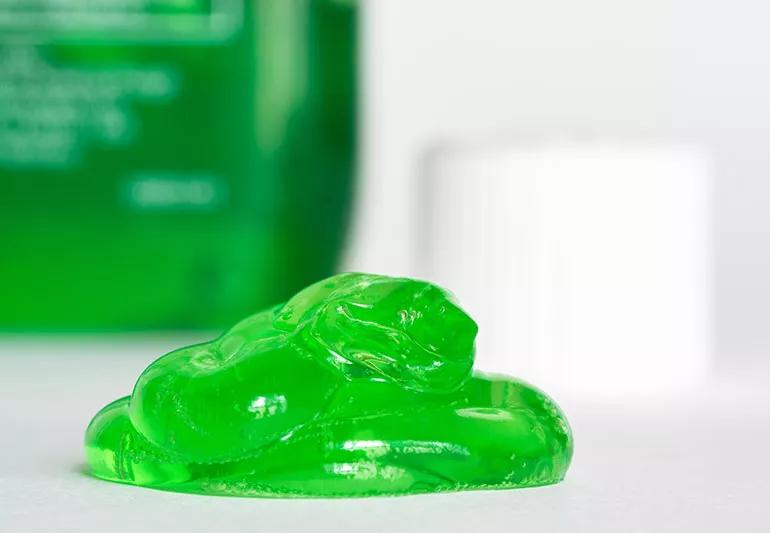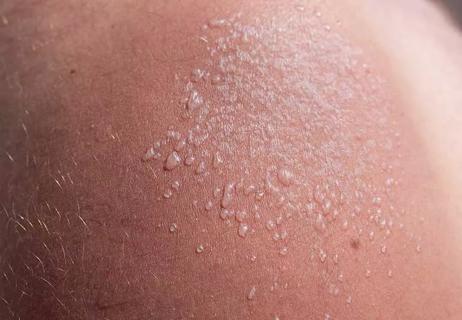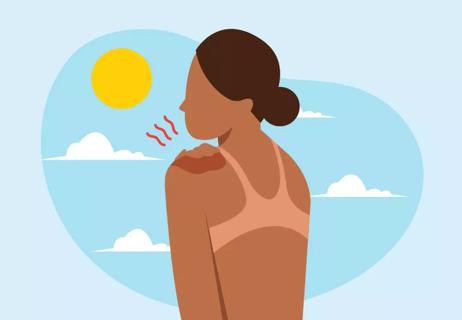This cooling gel can help soothe sunburned skin, but it can’t cure the burn

We all know the feeling of a sunburn really burns. Your skin becomes pink and warm to the touch, and even changing clothes makes you go, “Ow!”
Advertisement
Cleveland Clinic is a non-profit academic medical center. Advertising on our site helps support our mission. We do not endorse non-Cleveland Clinic products or services. Policy
There are plenty of ways to relieve sunburn, but one common option you might reach for is aloe vera gel. The gel, which naturally comes from the aloe plant, has been recommended by some to be used on sunburns.
While aloe vera does have certain soothing properties, even this substance isn’t enough to fully treat sunburned skin.
Dermatologist Paul Benedetto, MD, breaks down what we know about aloe vera and what to know before using it on your sunburn, as well as how to prevent future burns.
In a way, yes. But the humble plant is no miracle worker.
“Aloe does not prevent sunburn, and it’s also been shown to be no more effective in treating sunburn than a placebo in multiple studies,” says Dr. Benedetto.
So, even if this gel feels good on your burn, it isn’t a cure for your sunburn (nor is it an appropriate replacement for sunscreen). But even so, there’s a reason many people turn to it — that’s because it seems to have cooling qualities that help relieve the pain of a sunburn.
In other words, aloe vera can be a comforting partner in making your sunburn less painful. But it won’t make it go away faster.
“Aloe appears to have anti-inflammatory, antioxidant and skin-protective qualities, which may be why it is often suggested for sunburn,” Dr. Benedetto explains. “The physical properties of aloe can also feel soothing on the skin.”
Advertisement
While more research still needs to be done, one study found that aloe vera has moisturizing and anti-inflammatory properties, which can soothe the skin and may even help prevent intense peeling.
As the ideal medicine for curing a sunburn is time, aloe vera gel can be helpful in keeping the burned area less irritated while it heals.
When it comes to your skin, it’s probably not a good idea to slap just anything on it, willy-nilly. So, you may be wondering if aloe vera is a safe option to use.
“Overall, aloe vera can be considered safe,” Dr. Benedetto assures. But at the same time, he warns that having a bad reaction to aloe vera is possible.
“Occasionally, people may develop an allergic or irritant dermatitis reaction to aloe products, but that rate in the general population is low,” he notes. “That being said, if you’re experiencing itching or see a rash forming directly after using aloe, you may be having a bad reaction.”
Whether it’s from your local drug store or straight from the plant’s leaf, it’s pretty easy to get a hold of the gel-like substance. But is one source better than others?
Dr. Benedetto points out that the best way to make your decision is based on what’s available, cost and convenience. “Both processed aloe creams and whole-plant aloe will likely have similar soothing effects on the skin,” he adds.
You may just want to think twice about using aloe if you’ve had a bad reaction in the past, though. And be sure to read the labels of any store-bought products carefully if you have any allergies to check all additive ingredients.
Applying any kind of aloe vera is fairly simple — just add a layer of gel on the affected area gently throughout the day. Some proponents of aloe vera also recommend keeping your aloe vera chilled to add a more soothing, cooling effect.
This can work with any of these types of aloe vera, just talk to a doctor first if you think your burn has gone into “hell’s itch” territory.
Not only does aloe have many properties, but it’s also a low-maintenance house plant. Just keep an aloe plant in your home and use some of the gel from one of its spiky leaves. You can extract the pure gel by cutting off a piece of a leaf, slicing it in half and spreading the gel from the inside on the affected area of skin. Repeat as needed throughout the day.
Don’t have a green thumb? No worries. You can easily find aloe vera gel in stores or online. Try to look for pure or 100% aloe vera gel to avoid any ingredients that may irritate your skin. Apply a layer of the gel over the burned area and repeat as needed.
Advertisement
You can also get the benefits of aloe vera through a lotion. This may be a good option if you want something for daily use or a two-in-one moisturizer. But using a lotion increases your risk of finding a product with added fragrances or chemical additives. That, and the fact that a recent study found that 70% aloe vera lotion isn’t as beneficial against sunburns, sticking to regular gel may be the better way to go.
Now, you may be wondering: “Well, if aloe vera doesn’t really treat a sunburn, are there things that do?” You may already know the answer.
Basically, the best way to treat your sunburn is to travel back in time and put on more sunscreen. As that’s not possible, use the time while you’re waiting for your sunburn to heal to shop around for some stronger sunblock to use on your next beach day.
“The best way to ‘treat’ a sunburn is to prevent one,” stresses Dr. Benedetto. “Using appropriate strength SPF is important. Use at least 30 SPF for daily use, and 50 SPF or greater for heavy sun exposure like the beach. And be sure to reapply every two hours.”
Plus, it can’t hurt to invest in some sun-protective clothing or even a beach umbrella for an extra barrier against the sun’s rays.
Advertisement
Aside from aloe vera, there are a few extra ways to minimize the irritation from a bad burn, like:
“Beyond that, time to let the skin heal is all that is needed,” says Dr. Benedetto.
Advertisement
Learn more about our editorial process.
Advertisement

Leaving a severe sunburn untreated can lead to dehydration and heat-related illness

Resist the urge to peel, and treat your healing skin to some much-needed hydration

Soothe your red, burning skin by applying aloe vera, moisturizing and using a cold compress

A sunburn will leave you itchy and red, while sun poisoning can feel like an allergic reaction

The safest route for now is to avoid spray-style sunscreen, and opt for lotion-based ones instead

A dermatologist explains this agonizing type of sunburn

The combo of lime and sunshine can cause blisters

Most recommended precautions center around minimizing bruising or swelling

Type 2 diabetes isn’t inevitable with these dietary changes

Applying a hot or cold compress can help with pain